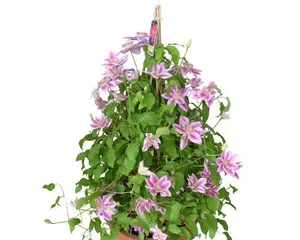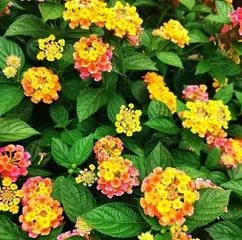Flowers are the beautiful gifts bestowed upon us by nature. Whether in the city or the countryside, beautiful flowers bring us joy and surprise. Among flowers, perennial herbaceous flowers are also a beloved type because they can grow year-round without needing to be replanted annually. This article will introduce the varieties and care tips for perennial herbaceous flowers, allowing readers to understand the beauty of these evergreen plants.

I: Anthurium
Anthurium is native to South America and is an evergreen shrub or small tree. Its name comes from its red inflorescence and palm-shaped leaves. Anthurium requires ample sunlight and moist soil and can grow in warm climates. It can not only be used as an ornamental plant but also for extracting resin.
II: Lilac
Lilac is an evergreen shrub or small tree, native to Europe. Its name comes from its purple inflorescence and unique fragrance. Lilac requires ample sunlight and well-drained soil and can grow in cool climates. It is widely used in gardens and parks and can also be used as cut flowers.

III: Rose
Rose is one of the most popular varieties of perennial herbaceous flowers. Its beautiful flowers and fragrant scent make it a favorite for many people. Roses require ample sunlight and well-aerated soil and can grow in warm climates. It needs regular pruning and watering to maintain its health and beauty.
IV: Sunflower
Sunflower is a tall perennial herbaceous plant. Its name comes from its habit of growing towards the sun and its large, bright flowers. Sunflowers require ample sunlight and fertile soil and can grow in warm climates. It is widely used in gardens and courtyards and can also serve as food for birds.
V: Daylily
Daylily is a perennial herbaceous plant, its name derived from an image in ancient poetry. It has beautiful flowers and a unique fragrance, widely used for decoration and as a spice. Daylilies require ample sunlight and well-drained soil and can grow in warm climates.

VI: Primrose
Primrose is a perennial herbaceous plant, its name derived from its habit of blooming in early spring. It has beautiful flowers and a fragrance, widely used in gardens and parks. Primroses require ample sunlight and moist soil and can grow in cool climates.
VII: Corn Poppy
Corn Poppy is a perennial herbaceous plant, its name derived from an image in ancient poetry. It has beautiful flowers and a fragrance, widely used in gardens and parks. Corn Poppies require ample sunlight and well-drained soil and can grow in warm climates.
VIII: Snapdragon
Snapdragon is a perennial herbaceous plant, its name derived from its flower shape resembling a goldfish. It has beautiful flowers and a fragrance, widely used in gardens and parks. Snapdragons require ample sunlight and well-drained soil and can grow in warm climates.
IX: Violet
Violet is a perennial herbaceous plant, its name derived from its purple flowers. It has beautiful flowers and a fragrance, widely used in gardens and parks. Violets require ample sunlight and well-aerated soil and can grow in cool climates.
X: Epiphyllum
Epiphyllum is a perennial herbaceous plant, its name derived from its white flowers that only open at night. It has beautiful flowers and a fragrance, widely used in gardens and parks. Epiphyllums require ample sunlight and well-drained soil and can grow in warm climates.
XI: Iris
Iris is a perennial herbaceous plant, its name derived from its flower shape resembling an iris. It has beautiful flowers and a fragrance, widely used in gardens and parks. Irises require ample sunlight and well-drained soil and can grow in warm climates.
XII: Begonia
Begonia is a perennial herbaceous plant, its name derived from its habit of blooming in autumn. It has beautiful flowers and a fragrance, widely used in gardens and parks. Begonias require ample sunlight and well-aerated soil and can grow in cool climates.
XIII: Chinese Rose
Chinese Rose is a perennial herbaceous plant, its name derived from an image in ancient poetry. It has beautiful flowers and a fragrance, widely used in gardens and parks. Chinese Roses require ample sunlight and well-drained soil and can grow in warm climates.
XIV: Begonia
Begonia is a perennial herbaceous plant, its name derived from its white flowers resembling the shape of a begonia. It has beautiful flowers and a fragrance, widely used in gardens and parks. Begonias require ample sunlight and well-aerated soil and can grow in cool climates.
XV: Care Tips
Perennial herbaceous flowers require proper care to maintain their health and beauty. Choose a location suitable for the variety's growth, providing ample sunlight and well-drained soil. Prune and water regularly to keep the plants healthy. Deal with pests and diseases promptly to prevent damage to the plants.
Perennial herbaceous flowers are a form of evergreen beauty, with a wide variety of species and diverse care methods. Whether it's Anthurium, Lilac, Rose, Daylily, or others, each has its own characteristics and beauty. It is hoped that through the introduction in this article, readers can better appreciate and care for these evergreen beauties.